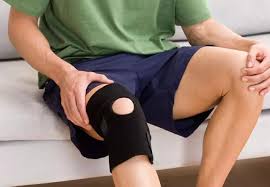Health
Effective Knee Arthritis Treatment for Pain Relief & Mobility

Knee pain can significantly disrupt your daily life, making even simple movements feel like a challenge. For the millions of Americans living with knee osteoarthritis, this discomfort is an everyday reality. The constant pain, stiffness, and swelling can limit your mobility and prevent you from enjoying the activities you love. Fortunately, if you are looking for effective knee arthritis treatment in Houston, there are advanced options available that can help you regain your freedom and live a more active, comfortable life.
Understanding the root cause of your knee pain is the first step toward finding lasting relief. Knee arthritis, particularly osteoarthritis, is a degenerative joint disease where the protective cartilage in the knee wears down over time. This leads to inflammation, which is a primary source of pain. One of the factors contributing to this inflammation is the formation of new, abnormal blood vessels in the knee lining, a process known as synovial angiogenesis. These new vessels create increased blood flow, which fuels the inflammatory cycle and worsens the pain.
This guide will explore a modern, minimally invasive procedure designed to target this underlying cause of arthritic knee pain, offering hope to those who haven’t found relief with traditional methods.
Understanding the Symptoms of Knee Arthritis
Recognizing the signs of knee arthritis is crucial for seeking timely and effective treatment. While symptoms can vary from person to person, there are several common indicators that you might be dealing with this condition.
Common Symptoms Include:
- Persistent Pain: You may experience a deep, aching pain in the knee joint, especially during or after physical activity like walking, climbing stairs, or kneeling.
- Morning Stiffness: Many people report that their knee feels particularly stiff when they wake up in the morning or after sitting for a long time. This stiffness usually eases with movement.
- Tenderness and Swelling: The area around your knee might feel tender to the touch. You may also notice visible swelling or puffiness due to the inflammation in the joint.
- Loss of Flexibility: As the condition progresses, you might find it difficult to bend or straighten your knee completely, limiting your range of motion.
- Grating Sensation: Some individuals feel a grinding or hear a clicking sound when they move their knee. This is caused by the rough surfaces of the joint rubbing together.
- Bone Spurs: In some cases, small bony growths called bone spurs can form around the edges of the joint, causing additional pain and restricted movement.
If these symptoms sound familiar, it’s important to consult a specialist who can provide an accurate diagnosis and guide you toward the right treatment path.
Exploring Modern Knee Arthritis Treatment Options
When it comes to managing knee arthritis pain, there are several avenues to explore. Traditional treatments often start with conservative approaches and may progress to more invasive options if the pain persists.
Common treatments today include:
- Pain Medications: Nonsteroidal anti-inflammatory drugs (NSAIDs) are often recommended to reduce pain and inflammation. However, long-term use can have side effects, and some people may want to avoid daily reliance on medication.
- Steroid Injections: Corticosteroid injections directly into the knee joint can provide temporary relief from inflammation and pain. While effective for some, the relief may only last for several months.
- Physical Therapy: A structured physical therapy program is a standard and often beneficial treatment. It helps strengthen the muscles around the knee, improve flexibility, and support the joint. Despite its benefits, the pain can sometimes return once therapy ends.
- Knee Replacement Surgery: For severe cases of arthritis, knee replacement surgery is a viable and effective option. It involves replacing the damaged joint with an artificial one. However, this is a major surgical procedure, and many patients may not be ready or eligible for such an extensive operation.
For those seeking an alternative to daily medications or major surgery, a minimally invasive procedure known as Genicular Artery Embolization (GAE) offers a promising solution.
A Closer Look at Genicular Artery Embolization (GAE)
Genicular Artery Embolization (GAE) is an innovative, non-surgical procedure specifically designed to reduce knee pain caused by osteoarthritis. It works by targeting the inflammation at its source. As mentioned earlier, the pain in an arthritic knee is partly due to the formation of new, tiny arteries that increase blood flow to the inflamed joint lining.
GAE addresses this by selectively blocking these specific arteries. By reducing the excessive blood flow, the procedure helps to decrease inflammation, which in turn alleviates pain. Studies have shown that a high percentage of patients who undergo GAE experience a significant improvement in their knee pain.
What Happens During the GAE Procedure?
GAE is a minimally invasive procedure performed by an interventional radiologist in a clinic setting. Here’s a step-by-step look at what you can expect:
- Preparation: The procedure is typically performed under moderate sedation, meaning you will be relaxed and comfortable but not fully asleep. This is usually all that is needed for the short procedure, which generally lasts less than 90 minutes.
- Accessing the Arteries: The interventional radiologist makes a tiny incision, usually in the groin or wrist area, to insert a very thin tube called a catheter.
- Targeting the Blood Flow: Using advanced imaging for guidance, the catheter is carefully navigated to the specific genicular arteries in the knee that are contributing to inflammation.
- Embolization: Once the catheter is in place, microscopic, harmless particles are injected into these tiny blood vessels. These particles create a blockage, or an “embolization,” which cuts off the excess blood supply to the inflamed areas. The main blood flow to the knee remains unaffected.
- Recovery: After the procedure, patients are typically able to go home the same day. Relief from knee pain usually begins to be felt over the following couple of weeks as the inflammation subsides.
This technique offers a significant advantage for individuals who are not candidates for surgery or wish to avoid it, providing a path to pain relief without a long recovery period.
Take the Next Step Toward a Pain-Free Life
Living with chronic knee pain doesn’t have to be your reality. With advanced knee arthritis treatment in Houston, you can find a solution that fits your lifestyle and helps you get back to doing the things you enjoy. Procedures like Genicular Artery Embolization are changing the way we approach osteoarthritis pain by offering a safe, effective, and minimally invasive alternative to traditional treatments.
If you are tired of letting knee pain control your life, it may be time to explore your options. Schedule a consultation with a knee pain specialist to discuss your symptoms and determine if an advanced treatment like GAE is the right choice for you. Taking that first step can lead you toward a future with less pain and more freedom.
-

 Celebrity5 months ago
Celebrity5 months agoChristina Erika Carandini Lee: A Life of Grace, Heritage, and Privacy
-

 Celebrity5 months ago
Celebrity5 months agoTrey Kulley Majors: The Untold Story of Lee Majors’ Son
-

 Celebrity5 months ago
Celebrity5 months agoJamie White-Welling: Bio, Career, and Hollywood Connection Life with Tom Welling
-

 Celebrity4 months ago
Celebrity4 months agoNick Schmit? The Man Behind Jonathan Capehart Success
















